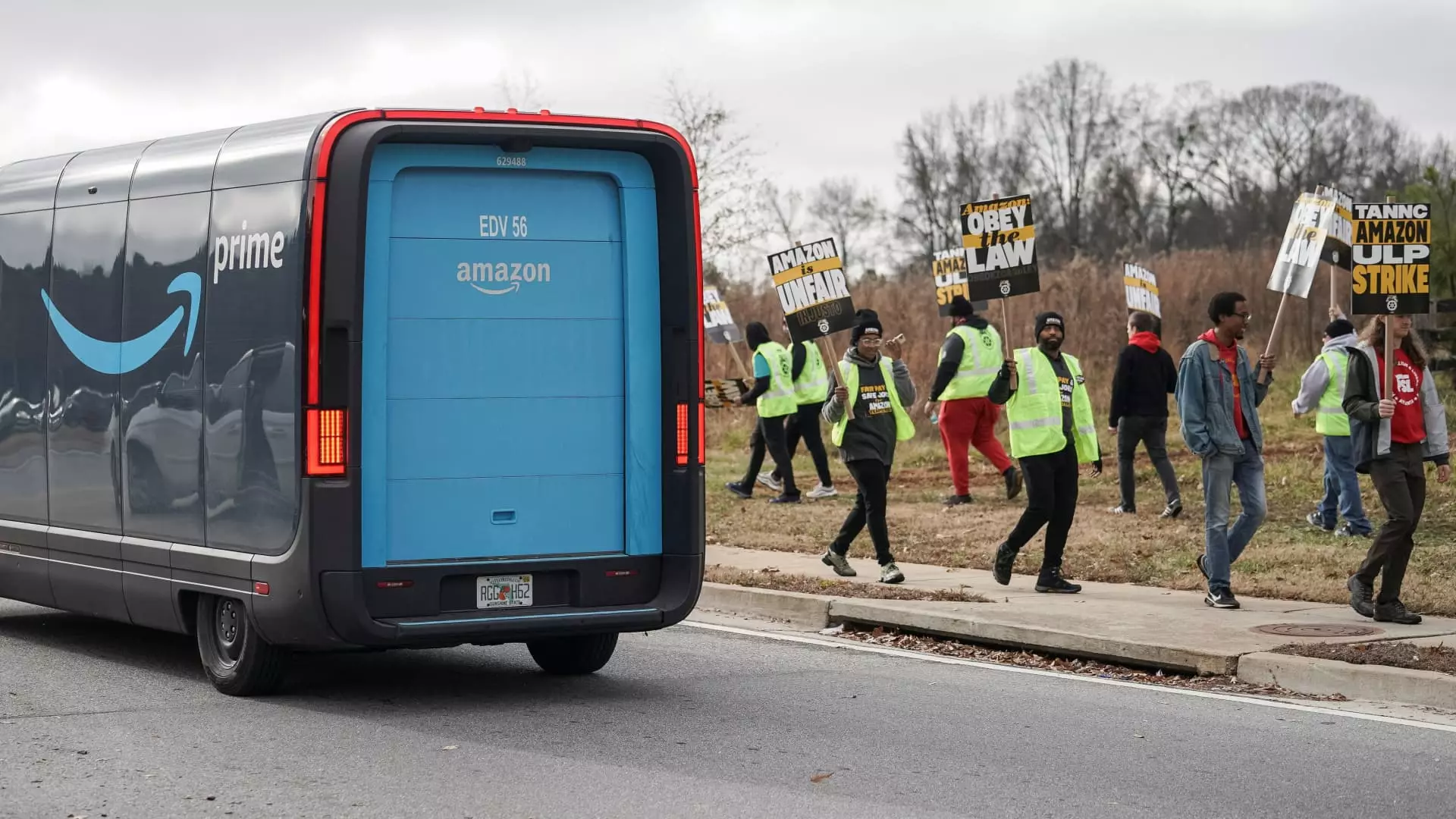On a pivotal Thursday, workers across seven Amazon facilities situated in New York, Georgia, California, and Illinois took a brave stand by going on strike. This monumental move, spearheaded by members of the Teamsters union, underscored a broader movement demanding enhanced benefits, increased wages, and improved working conditions. With the holiday shopping season in full swing, the strike aims to exert pressure on Amazon to engage in meaningful negotiations regarding labor contracts. This labor movement reflects not just a single company’s internal struggles, but rather the growing momentum for workers’ rights in the American context.
Teamsters President Sean O’Brien issued a clear and pointed message regarding the urgency of the situation, emphasizing the consequences of Amazon’s reluctance to negotiate. Notably, he articulated that delays in holiday package deliveries should be placed at the feet of “Amazon’s insatiable greed.” This statement encapsulates the frustration felt by many workers who have been vocal about their grievances. In stark contrast, Amazon countered these claims, describing the demonstrators as largely comprising “outsiders” rather than actual employees. The company’s rhetoric suggests a focus on portraying the strike as a misrepresentation of genuine employee sentiment while reinforcing its commitment to customer satisfaction during peak shopping times.
Despite the Teamsters’ assertion that nearly 10,000 Amazon workers have joined their ranks, it is crucial to contextualize this number against Amazon’s vast workforce, which numbers approximately 1.53 million. This statistic reveals that unionized members represent less than 1% of the overall workforce, raising questions about the effectiveness of unionization efforts within the company. Critics argue that while the aspirations of unions may be noble, their limited penetration into such a colossal organization highlights the challenges faced in mobilizing a cohesive response from all workers.
A Historical Perspective on Unionization at Amazon
The current strike marks an important chapter in Amazon’s ongoing relationship with labor unions, particularly following significant events in 2022 when warehouse workers in Staten Island voted to unionize. This landmark decision was met with fierce opposition from Amazon, leading to a broader conversation about labor rights and corporate resistance. The subsequent decision of the Amazon Labor Union to affiliate with the Teamsters emphasizes a strategic shift among labor advocates, seeking to consolidate resources and bargaining power against Amazon’s considerable might.
The Future of Labor Relations and Amazon
As the strike unfolds, its implications extend beyond Amazon to the wider labor movement across the United States. The increasing willingness of workers to organize and advocate for their rights presents a potential paradigm shift in labor relations. While Amazon has historically been resistant to unions, the intensifying tide of labor activism may necessitate a reevaluation of its approach. The outcome of this strike could very well set precedents for labor negotiations, impacting not only Amazon’s operations but also defining a new standard for workers’ rights in the entire retail industry. The unfolding events may signal a critical turning point in the relationship between labor and corporate giants, paving the way for a future where employee voices are more prominently acknowledged.

